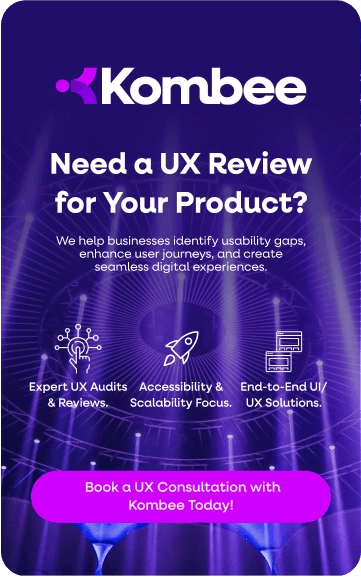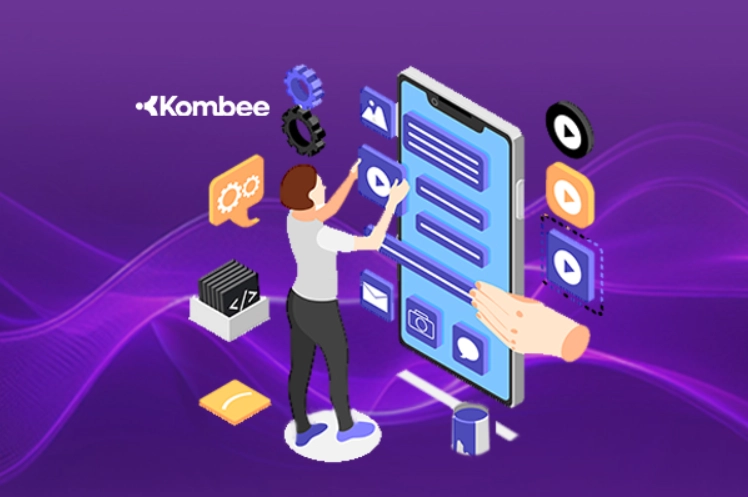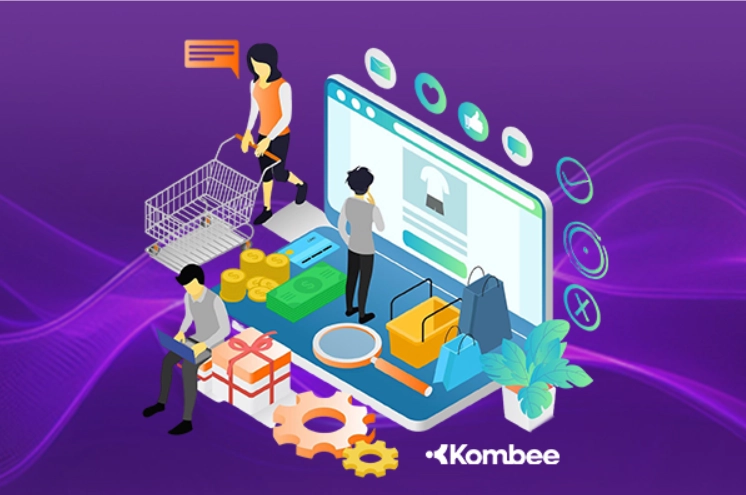Introduction
Have you ever judged a business by its website? We all do it. According to reports, 75% of users judge a business according to its website design in the first look. If a website needs to be more modern, it's hard to trust the business behind it. Now, think about your e-commerce site. Does it give your customers a good first impression?
Your website is more than where people might buy products- it's often where people will trust your brand. However, in a competitive market, one factor that separates excellent companies from everyone else is a great e-commerce web design. Hence, there’s a need to be more innovative than the regular.
The blog discusses seven e-commerce web design trends designed to get customers more of what they want and better position their business.
The 7 E-commerce Web Design Trends Your Competitors Want to Keep Secret!
1. 360-Degree Product Views
Could customers need to see you before deciding to trust you?
360-degree product views give an accurate, interactive view of products from every angle, letting customers view the product from different sides. This feature imitates the in-store shopping experience especially in New Zealand, thus building customer confidence in their purchase.
Why it matters:
A complete product view eliminates uncertainty and leads to a good shopping experience that builds customer trust.
How to do it:
- Use high-resolution images to create seamless 360-degree views.
- Add intuitive rotate and zoom options for an interactive feel.
- Highlight product features for the viewer to provide a detailed overview.
This trend redefines how e-commerce web design services approach product presentation.
Tip: Dedicated Product Landing Pages
Create dedicated landing pages to showcase individual products or categories. Include high-quality images, detailed descriptions, and clear calls to action to drive purchases.
2. Personalization through AI

Are you giving your customers what they want before they ask?
AI-powered personalization uses customer data to tailor shopping experiences catering to New Zealand shoppers with localized product recommendations and preferences. This trend focuses on making every interaction relevant to the user, from product recommendations to customized emails.
Technologies like Virtual Reality (VR) and, of course, Augmented Reality (AR) are taking personalization to a new level. Consider a customer who receives personalized furniture recommendations and uses AR to see how those pieces would look in their living room. Or a shopper trying on recommended clothing through a VR-powered virtual fitting room.
By combining AI, VR, and AR, businesses can deliver hyper-personalized, immersive shopping experiences that meet customer needs and make the process more interactive and enjoyable.
Why it matters:
Personalized experiences create stronger connections with your customers, making them feel valued and understood.
How to implement it:
- Analyze customer behaviour to offer tailored product suggestions.
- Integrate AI chatbots, VR and AR for personalized support.
- Dynamically adapt website content to reflect user preferences.
AI-driven solutions are becoming indispensable in modern e-commerce web design trends, enhancing engagement and loyalty.
Tip: Enhanced Product Discovery with AI Search
Add an AI-powered search tool to help customers find products effortlessly. Personalize search results based on user preferences to enhance their experience.
3. Micro-Animations for Seamless Interaction
Is your website fun to interact with?
Micro-animations bring subtle movements to your website, such as buttons that light up when clicked or icons that animate during specific actions. These small details make navigating your site enjoyable and intuitive.
Why it matters:
They guide users smoothly through your website, enhancing the browsing experience while keeping visitors engaged.
How to implement it:
- Add animations to key actions like scrolling, clicking, or hovering.
- Keep animations subtle and smooth to avoid distractions.
- Regularly test user feedback to hone in on its impact.
Micro-animations are the go-to choice for e-commerce website developers pursuing sophisticated and interactive designs.
4. Gothic Visuals and Neubrutalism

Does your design break through the crowd?
Bold aesthetics such as gothic visuals (deep colors and dramatic contrasts) and neubrutalism (minimalistic, raw designs) break the e-commerce mold. These styles appeal to audiences seeking unique and authentic visuals.
Why it matters:
They make brands stand out, leaving a memorable impression on customers while creating an eye-catching identity.
How to implement it:
- Try moody color palettes paired with bold accents.
- Retro fonts and raw layouts can be used to show creativity.
- Align these visuals with your brand identity to stay consistent.
These unconventional styles are shaking up traditional e-commerce web design services, making them perfect for brands that want to stand out.
5. Streamlined Navigation for Easy Usability

Do your customers find what they need quickly?
A cluttered menu or complex navigation frustrates users and drives them away. Streamlined navigation ensures your customers can easily and quickly find what they want.
Why it matters:
Straightforward navigation leads to a smoother browsing experience, making users more likely to explore more of your site and, therefore, leading to higher conversions.
How to implement it:
- Streamline menu options to the bare essentials.
- Use clear, descriptive labels for categories and subcategories.
- Add a prominent search bar to make product discovery easy.
Easy navigation is one of the primary objectives of e-commerce website developers in when trying to enhance the user experience.
Tip: Minimalistic and Clean Aesthetics
Keep your website simple and clutter-free with clean layouts and clear fonts. This ensures customers are easily able to find what they need and enjoy a smooth shopping experience.
6. Interactive Product Customization Tools

Are you letting your customers make it personal?
Interactive customization tools allow customers to personalize products directly on your website. Whether picking colors, adding text, or selecting features, this trend empowers customers to create something uniquely theirs.
Why it matters:
Customization builds a sense of ownership, making customers more invested in their purchases and less likely to return them.
How to implement it:
- Provide real-time previews of customizations on product pages.
- Ensure the customization process is user-friendly and visually appealing.
- Emphasize these choices in your marketing to grab eyeballs.
Interactive customization is becoming needed in e-commerce web design trends, bringing customers closer.
Tip: Live Chat and Video Support Features
Provide instant assistance with live chat or video support on your website. This builds trust and reduces cart abandonment by addressing customer concerns quickly.
7. Mobile-First Design

Does your website look good on mobile?
With the growth of mobile shopping now in New Zealand, your website must work flawlessly on smartphones and tablets. A mobile-first approach optimizes your site for smaller screens and offers a smooth, user-friendly experience.
Why it matters:
Mobile-friendly websites make shopping easier for users, making them spend more time on your site and complete purchases without frustration.
How to implement it:
- Use responsive layouts that adjust beautifully to any screen size.
- Optimize loading speeds for mobile users.
- Simplify mobile checkout processes to reduce friction.
Mobile-first strategies are the foundation of e-commerce web design, ensuring your website is ready for modern shoppers.
Tip: Prioritize Mobile-First Design
Make your website mobile-friendly to cater to shoppers using phones and tablets. A responsive design boosts usability and ensures your store looks great on any device.
8. Dynamic Grid Layouts

Are you providing an engaging browsing experience?
Dynamic grid layouts disrupt the vertical-only scrolling pattern of the past by allowing customers to scroll horizontally, vertically, and diagonally. This modern approach makes for better product discovery and a more enjoyable, interactive experience on your website.
Why it matters:
- Engaging Exploration: Dynamic scrolling keeps customers interested and drives them to explore more products.
- Improved Comparisons: Customers can compare side-by-side easily, improving their decision-making process.
- Creative Showcase: It's excellent for collections, lookbooks, or featured product categories.
How to apply this:
- Grid Systems: Leverage modern CSS techniques, such as CSS Grid or Flexbox, to generate layouts that support multidirectional scrolling.
- Visual Cues: Subtle arrows or scroll indicators will guide users through the layout.
- Category-Specific Use: This layout is best used in sections displaying products in rows, like clothing collections or product comparisons.
Multidirectional layouts redefine e-commerce web design, giving users an exciting and flexible way to interact with your site.
Tip: Product Comparison Grids
Create comparison grids that allow users to explore multiple products simultaneously. This enhances usability and makes it easier for customers to make informed choices.
9. Incorporate Trust Signals

Are you building confidence with your customers?
Trust signals — including customer reviews, testimonials, security badges, and transparent return policies — are vital to reassuring buyers that their e-commerce sites are safe and reliable. These signals reduce the anxiety of purchase decisions and lead to confident buying decisions.
Why it matters:
- Builds Credibility: Buyers will be more prone to buy from a website that demonstrates transparency and reliability.
- Reduces Cart Abandonment: Highlighted secure payment options and clear return policies minimize hesitation in checkout.
- Social Proof: Positive reviews and testimonials prove that other people trust your brand; this encourages new customers to make the same decision.
How to use it:
- Customer Reviews: Present customer reviews and ratings very obviously on product pages. Present photos or videos of actual customers to make them feel more authentic.
- Security Badges: Place security badges like SSL certificates and payment protection badges at the checkout to convince users.
- Clear Policies: State return policies, guarantees, and shipping info in easily located sections, eliminating doubt.
Some of the best e-commerce web design trends to skyrocket your conversion and loyalty include incorporating trust indicators.
Tip: Trust-Building Pop-Ups
Use the exit-intent pop-up window to display a testimonial or guarantee just as the customer leaves.
Conclusion
The world of e-commerce moves very fast, and your website must keep pace. Trends such as those covered above aren't nice-to-haves- they make a massive difference in the eyes of your customers about your brand and how they shop on your website.
These ideas will help you build a user-friendly, unique website that is different from others. What your customers would love most should be your starting point. Small changes lead to significant results.
Is your online store struggling? Are your customers leaving your site without buying? Maybe you already have what they want but the experience doesn’t excite them to get to it. At Kombee, intelligent design is how to encourage buyers to stay, gain trust and boost sales. So, what's next? Pick one trend and start—now's the time to take your online store to the next level!
Frequently Asked Questions
Q1. What are the top e-commerce web design trends in 2025?
Some of the most impactful e-commerce web design trends in 2025 include 360-degree product views, AI-driven personalization, micro-animations, mobile-first design, and dynamic grid layouts.
Q2. Why is mobile-first design important for e-commerce websites?
Mobile-first design ensures that your website is optimized for smartphones and tablets, making shopping more seamless. This improves usability, reduces cart abandonment, and increases conversions.
Q3. How do trust signals impact e-commerce success?
Trust signals like customer reviews, security badges, and transparent return policies build credibility, reduce buyer hesitation, and increase customer confidence, leading to higher sales and loyalty.






